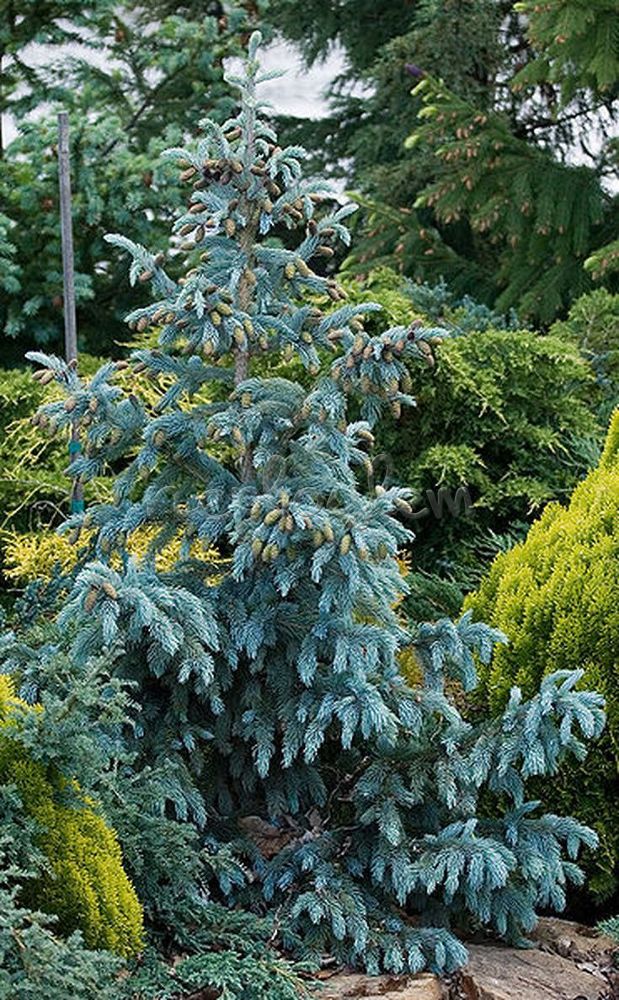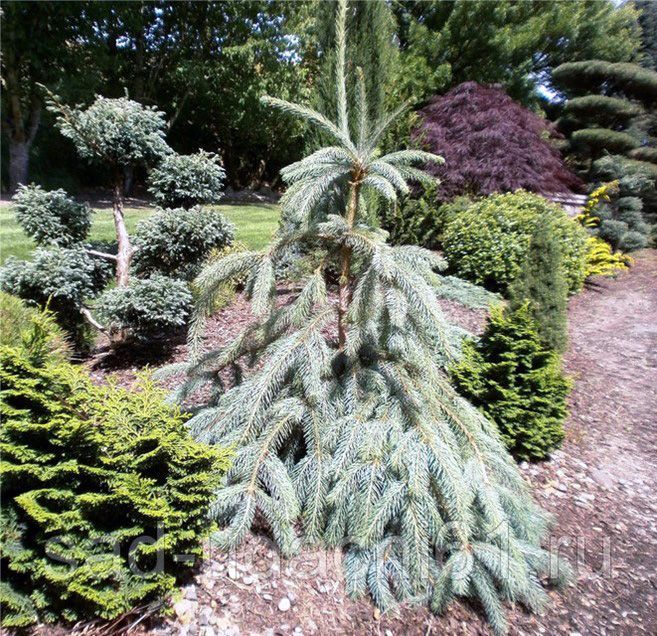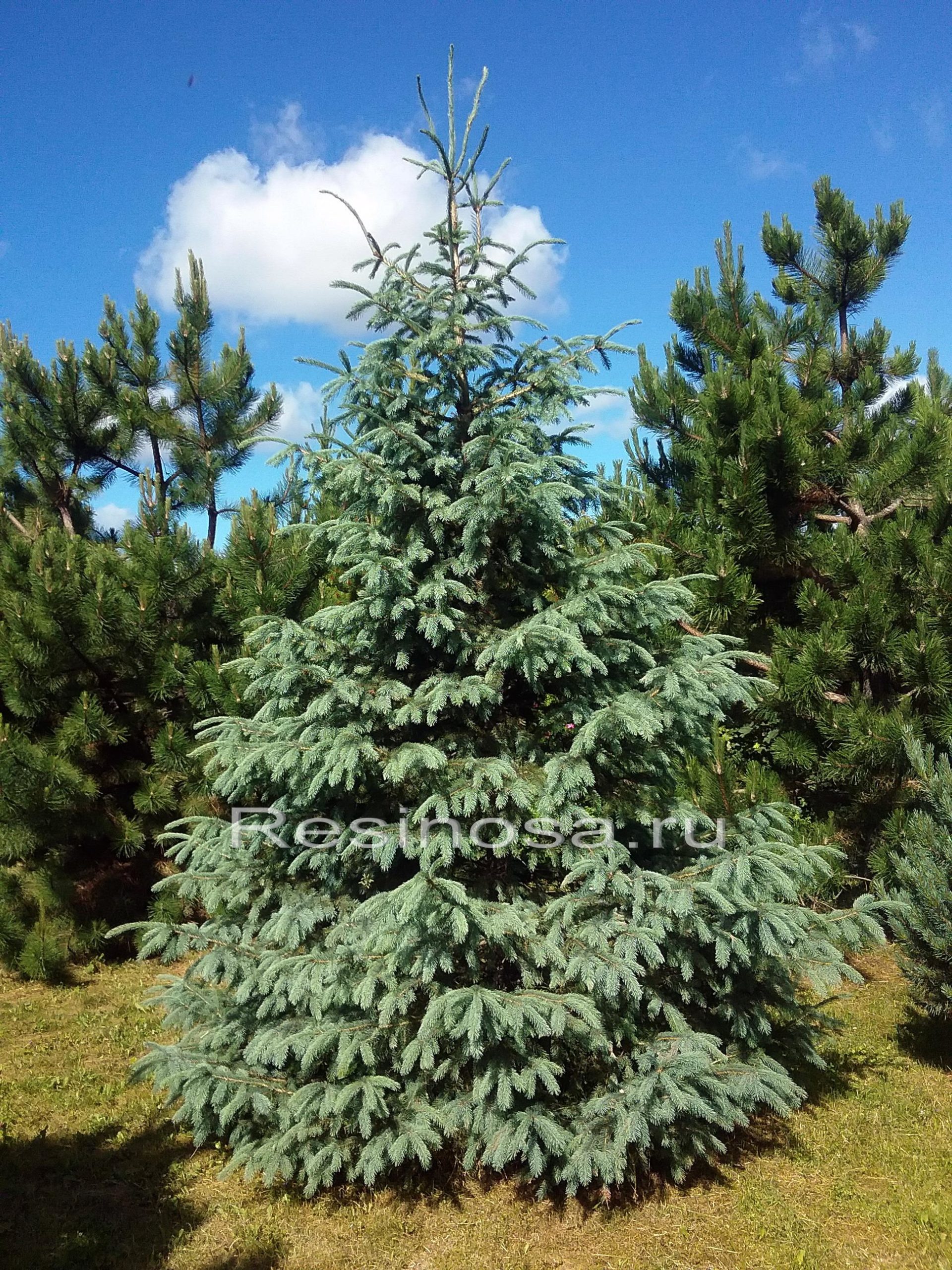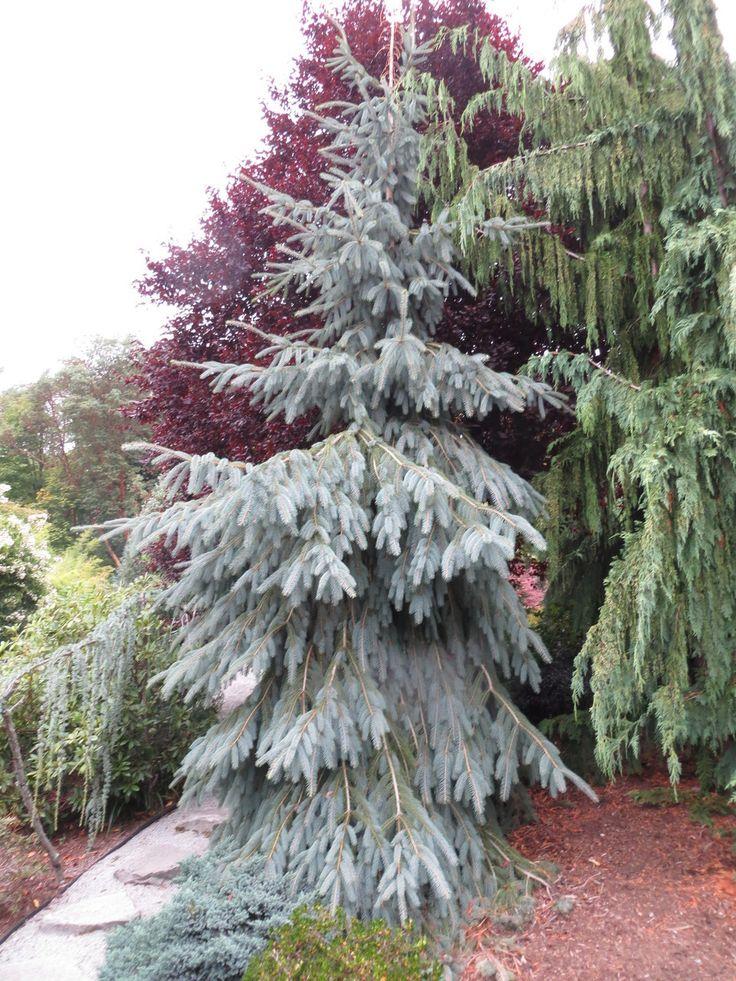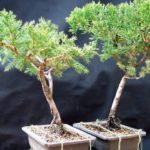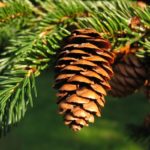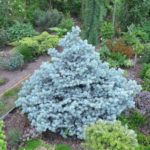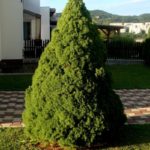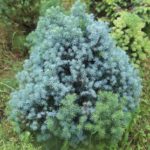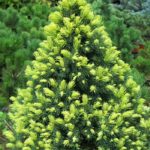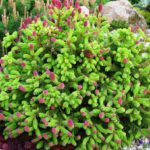Engelmann spruce is an attractive ornamental crop characterized by an attractive conical crown and silver-green needles. This plant is often used in landscape design and helps to achieve a truly fabulous atmosphere on the site. There are several species of this plant that differ in size and crown shape. There is also some difference in the color of the needles.
Variety information
According to the description, Engelmann spruce is an evergreen crop from the Pine family. The plant was named after the German naturalist Theodor Engelmann. It is highly decorative and is often used in landscape design.
In appearance, the tree resembles prickly spruce, but has a narrower and elongated silhouette. In addition, the plant is characterized by soft needles and small cones. The main features of Engelmann spruce include the following:
- The height of the tree is 15-20 meters. There are also tall plants that reach 50 meters.
- The crown has a pyramidal shape and has a diameter of 4.5-6 meters. The plant is characterized by drooping branches. This gives it an unusual weeping appearance. The crown is usually symmetrical.
- The culture has soft and flexible needles. It is characterized by straight needles. However, sometimes they are distinguished by their crescent shape. The length of the needles is rarely more than 3 centimeters. Its color can be different - silver-green, bluish-green, blue. Young shoots have a lighter shade, which contrasts with old needles.
- The cones are cylindrical in shape and small in size. Their length is 4-7 centimeters. At the initial stage of ripening, the cones are purple in color, and then become brown with a yellowish tint.
- The lifespan of the plant is 500 years.
Engelmann spruce is considered a light-loving plant. When planted in the shade, the needles darken and lose their shine. The tree tolerates frost normally and can easily withstand temperatures dropping to -40 degrees.
Known varieties
Engelmann spruce is considered a very widespread crop. Many gardeners use the plant to decorate their own plots, creating a hedge.Some gardeners plant several plants at once that will help provide shade. It should be borne in mind that this culture has several varieties, each of which has certain characteristics:
- Glauca is a tall ornamental tree that can reach 15 meters. The culture has a cone-shaped crown with a diameter of 4 meters and short needles measuring 2 centimeters. It is distinguished by its rich blue color. The cones are cylindrical in shape and size 5 centimeters. When ripe, the fruits have a rich brown color.
- Bush's Lace - this variety is characterized by a weeping crown of a pyramidal shape. By the age of 10 years, the spruce reaches a height of 4 meters. In this case, the crown diameter does not exceed 1 meter. The needles of the plant have a rich blue color and do not exceed 2 centimeters in length. During the flowering period, cones measuring 3 centimeters are formed on the plant. They have a bright brown color.
- Pendula - this variety has a narrow conical crown. By the age of 25, the tree grows up to 12 meters. The diameter of the plant is 3 meters. The crop grows a maximum of 25 centimeters per year. Its distinctive feature is the blue-gray needles. This variety is highly resistant to frost. It can withstand temperatures down to -42 degrees.
- Snake - this plant has a sparse pyramidal crown. At the same time, the height of the tree does not exceed 14 meters, and its diameter is 2.5 meters. The crop grows 26 centimeters per year. The needles are light blue in color and quite long. The cones are distinguished by a pleasant light brown hue and a maximum length of 1.5 centimeters. The Snake variety is often used in landscape design as a tapeworm.For crop cultivation to be successful, the soil must be constantly loosened and moistened.
- Hesse - this crop is characterized by slow growth. During its entire life, the tree grows to a maximum of 13 meters. At the same time, the annual growth is only 7 centimeters. The needles of the plant are characterized by a silver-blue color. Moreover, its length does not exceed 2 centimeters. The crown has a cone shape and reaches a diameter of 1.5 meters. To grow such a spruce successfully, it must be watered frequently. This needs to be done every week. At the same time, you need to spend at least 15 liters of water per plant. Irrigation of the crown is of no small importance. This procedure helps clean it of dust and parasites.
Spreading
The Rocky Mountains located in North America are considered to be the birthplace of the Glauc Engelmann spruce. The culture also grows under natural conditions in British Columbia, a Canadian province. Trees form groups and are concentrated along rivers and on mountain slopes. In this case, plants preferentially choose shady places.
As trees grow, they can rise to a height of 3.5 thousand meters above sea level. Such conifers feel great with related species - fir, pine, and certain varieties of larch. As a result, mixed or coniferous forests are formed.
Landing
To prevent the root system of the plant from drying out, you should give preference to seedlings with closed roots. It is important to ensure that the plant’s branches are elastic and the needles are fresh. The presence of the current year's growth is of great importance. When purchasing, you should make sure that there are no stains or damage on the barrel.
Where to plant
Spruce grows well in sunny and shady areas. However, in the first case, the needles have a brighter and more saturated color. The best option would be a little partial shade. When planting a tall variety, it is important to provide it with enough free space - at least 10-15 meters from other trees. When planting dwarf crops, such as Engelmann Hobo spruce, such requirements may not be met.
When choosing soil, preference should be given to moderately moist soil with a neutral reaction. However, in general, Engelmann spruce is considered not too picky.
How to plant
When planting the Pendula variety and other varieties of Engelmann spruce, certain rules must be followed. First you need to prepare a recess. It should be 1.5-2 times higher than the lump of soil. In dense soil, it is worth providing a drainage layer of crushed bricks and sand. Therefore, the size of the recess must be made at least 70-80 centimeters.
Garden soil extracted from the hole must be mixed in equal parts with turf and peat and sand added to the composition. If necessary, complex fertilizers for conifers should be used. Moreover, often the seedling in the container is already supplied with nutrients that provide a prolonged effect.
After this, the plant must be placed in a recess for planting, watered and sprinkled with the first layer of soil. After this, the soil must be compacted well and watered again to ensure better adhesion to the roots.
After the earth settles, soil can be added to the composition. It is important to ensure that the root collar remains flush with the soil surface. Finally, the tree trunk circle needs to be covered with a mulch layer. It should consist of sawdust, pine needles or peat.
Features of care
Engelmann spruce is a fairly unpretentious crop, so even novice gardeners can care for it. In addition to the basic procedures, young seedlings need to be shaded a little. This is especially true in late February and early spring.
Watering
With regular rainfall, mature trees do not need to be watered. In this case, young plants should be moistened as needed, taking into account the condition of the soil. During drought periods, you need to moisten the soil 2-3 times a week. It is also useful to sprinkle the crown in the evenings.
The volume of water depends on the age of the crop. Typically, 12 liters of water should be used per 1 meter of growth. In this case, it is important to evenly distribute moisture over the area of the tree trunk circle.
Top dressing
It is recommended to fertilize spruce in early spring. In this case, you need to use special substances for coniferous crops. In general, a single application of mineral preparations during the season is sufficient for the tree. Additionally, it is permissible to use peat or compost. These substances need to be added to the tree trunk circle.
Loosening
The root system of spruce is characterized by a superficial location. Therefore, when loosening and weeding, you should not go deeper than 7 centimeters. When growing this plant, it is useful to mulch the tree trunk circle. This helps reduce moisture evaporation and stop weed growth. It is permissible to use dry leaves, peat, and sawdust as mulch.
Trimming
Sanitary pruning should be carried out in the first half of spring. In this case, it is necessary to get rid of dry branches and affected shoots. The crown itself needs to be thinned out a little. You don’t have to do the crown formation, however, if the shoots are densely located, such a procedure is still necessary.
Preparing for cold weather
Spruce of this variety is characterized by a high degree of frost resistance. Therefore, the crop does not need to be insulated for the winter. It is recommended to cover young seedlings with spruce branches to prevent snow from causing deformation of the crown. It is permissible to pour peat chips into the tree trunk circle for insulation.
How to propagate
Spruce can be propagated in different ways:
- Seeds - for this, in April the grains need to be soaked, then treated with potassium permanganate and planted in nutritious soil. Mulching the top layer of soil is of no small importance. After planting, the container with the seeds should be placed in a greenhouse and the soil should be moistened regularly. Fertilizer application and room ventilation are also of great importance.
- By cuttings - in this case, in April, shoots measuring 15 centimeters in size are required to be cut from the mother crop. This must be done with the heel. After which it is recommended to install the shoots for several days in a nutrient solution with the addition of a growth stimulator and transfer them to a soil mixture of soil and peat. The material must be kept in a greenhouse.
- By grafting - this method is used extremely rarely. In this case, the prepared cuttings need to be grafted onto conifers that grow in the desired region. The procedure is carried out in April or June.
Tree diseases and their control
The main cultural pathologies include the following:
- Schutte - accompanied by browning of the crown in the spring. At the same time, a cluster of fungal spores forms at the bottom of the needles.
- Snowy shutte - in this case, the needles turn brown in the fall. With the arrival of spring, a white coating forms on the needles.
- Fusarium - affects mainly young plants. In this case, the needles become brown and fall off.
To cope with pathologies, the spruce needs to be treated with fungicidal preparations.Most often, such funds are applied at the root.
To avoid the development of pathologies, you need to do the following:
- plant spruce in a sunny area;
- carefully select seedlings;
- when planting, treat the roots with fungicides;
- carry out sanitary pruning in a timely manner;
- In the spring, use copper-containing preparations.
Application
This plant looks great in single and group plantings with coniferous and deciduous crops. It can be combined with thuja, juniper, yew, cypress, and pine. Low varieties will be an excellent addition to the rock garden. They can be used to fence flower beds and create bonsai compositions.
Engelmann spruce is an attractive ornamental crop that fits into a wide variety of compositions. To get a healthy and beautiful tree, you need to properly care for it.

